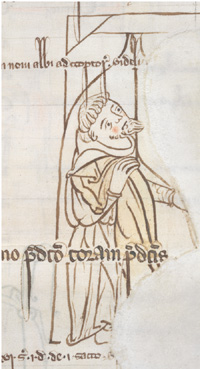 |
 |
 |
 |
 |
 |
 |
|
Fountains Abbey: History
Fountains Abbey: Buildings
|
The care of sheep (19/33) The care of sheep and the upkeep of the sheepcote was overseen by the bercarius, who was the master of the sheephouse/sheep reeve. His duties are set out in detail in the late thirteenth-century account book of Beaulieu Abbey, Hampshire, and were probably similar to those undertaken by his counterparts at Fountains and elsewhere.(83) The bercarius at Beaulieu clearly had extensive responsibilities, particularly at sheep-shearing time when he had to oversee the shearing, washing and grading of wool, and to ensure that everyone employed to work at this time was duly paid. The man who washed the wool, for example, was paid three shillings for good wool and two shillings for poorer quality wool; he also received two guest loaves and a smaller loaf, a gallon of beer and a servant to help him; should he require additional help he had to pay for this himself.(84) At Fountains, the sheep-washings and shearings took place in nine different places and wool was graded into six categories.(85)
On a day to day basis, the Beaulieu bercarius was
responsible for the construction and repair of buildings used by
the sheep and
shepherds, for the digging of dykes, the draining of fields,
and the cutting and stacking hay for winter use. He also had
to tend the horses, to pay and feed the labourers and to make
the sacks for the wool.(86) Whilst
no such in depth-account survives for Fountains Abbey, the mid-fifteenth
century ‘Bursar’s
Book’ offers
some insight to the nature of sheep-farming at Fountains at this
time. It records, for instance, purchases made by the master of
the sheep (magister ovium) which included iron, nails, wine and
a pair of steps.(87) A considerable
amount of tar was bought, for this was mixed with grease to make
sheep-salve, and each shepherd carried
a pot of this with him, as well as a crook and shears.(88) The
abbot and convent of Fountains were responsible for supplying the
keepers
of Warsill grange with tar and salve for the sheep, whenever it
was required.(89) Once the wool
had been washed it was passed to the wardrobekeeper and his assistant.
Sheephouses |
